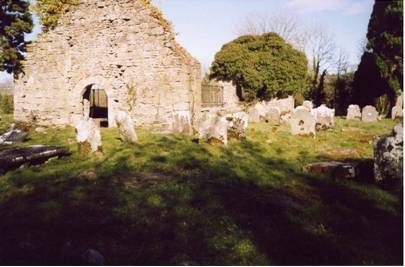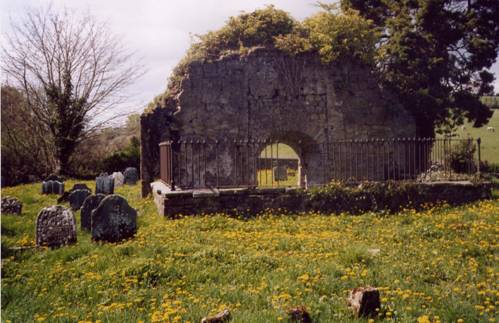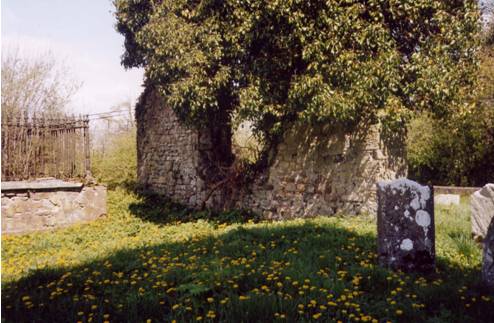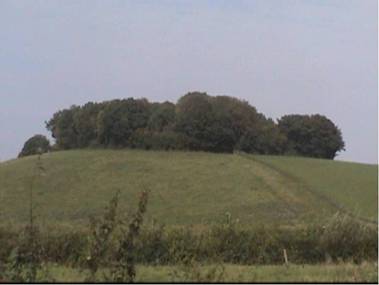St. Mellons / St. Muadain
Although Christianity started in Ireland in the 5th century AD, stone churches were not built until the 10th century and lying almost forgotten, is the Errigal Graveyard and the ruin of St. Mellan's (St. Muadain) a 10th century church. St. Muadain is the old word for St. Mellon.
The church, graveyard and holy well are dedicated to St. Muadain. The holy well is situated just over the road from the old church and its photo can be found in the "Out 'n' About section". The church may have been an early Christian foundation but there are no known literary references or archaeological remains to support this. It has been discribed as a ruin in 1622
 |
| St. Mellons |
The earliest remains of the site are the two main gables of the medieval church. Because the thickness of the two walls are different, it has been suggested that the walls are of different ages. It is believed that the West gable (seen below) was built before the East gable. If you look at the door way in the photo below you can see that the wall is very thick, approx 1.6m
By looking at the photo of the West gable, you will notice the difference in the stonework that surrounds the door. It is believed that there was once a window in this gable, but when the door was built, the window was filled in. The door was added to the gable around the 16th or 17th century. The door leads to to a burial enclosure. An inscription records that this was "The burial place of the Ancketills or Ankettells of Cassaughmone and Dernamuck 1687 to 1839".
 |
| West gable |
The East wall contains an open window opening and once had carved stones surrounding it, but these are now missing. The wall is much narrower than that of the West gable.
A shela na gig and two carved heads from the site are located at the Ulster Museum
 |
| East gable |
A local story says that if a young man meets a beautiful girl on leaving the cemetery, and arranges to meet her later, he will die within a year.
The graveyard also contains many 17th and 18th century graves. The earliest of these are the late 17th century flat slabs. Many of these commemorate English and Scottish settlers in the area. They were buried in the local graveyard, regardless of religious persuasion. The flat slabs were used to mark family graves and many were burried in the spot. The inscriptions, which have long since eroded, recorded the name of the head of the family at the time that the family settled here. No further names were added, even though the grave was still used over and over again.
For details of the headstones please "click" the link below.
Top






